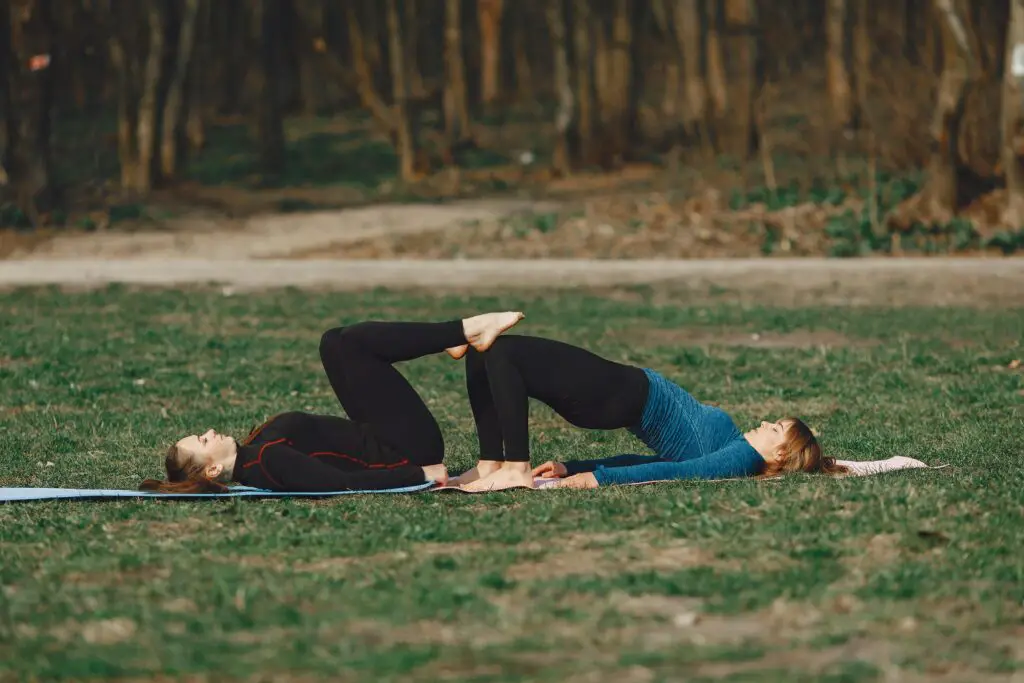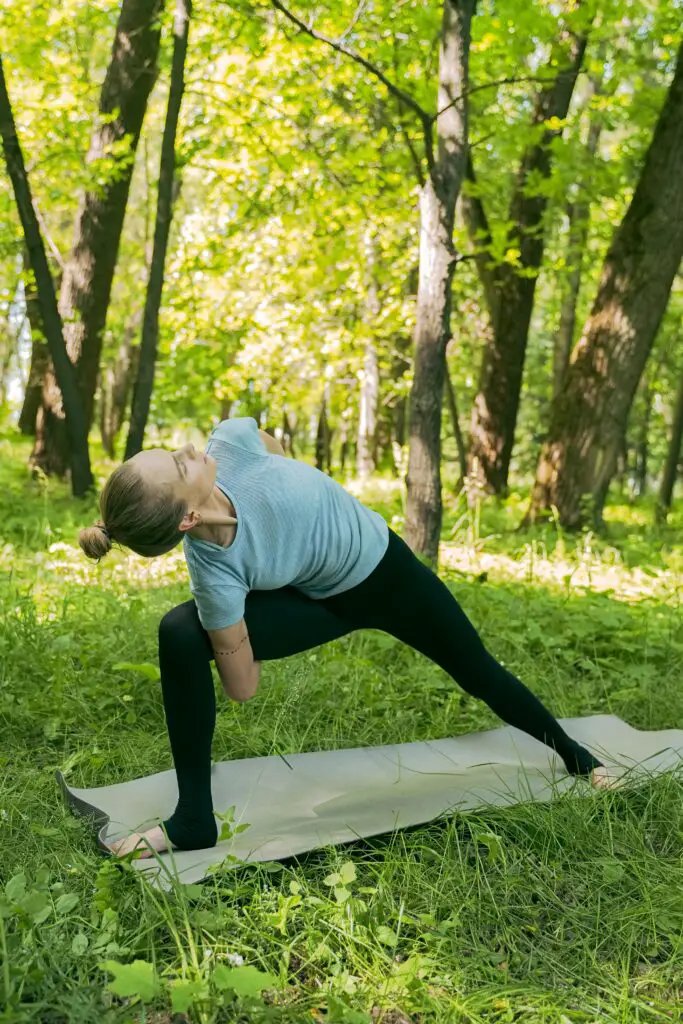If you’ve ever had lower back suffering, you are aware of how crippling it can be. Discomfort can significantly negatively influence your quality of life, interfering with daily tasks and causing dull aches or intense shooting pains. But there’s still hope. Focus workout routines can reduce lower back discomfort and enhance your general health.

Understanding Lower Back Anatomy
It’s crucial to comprehend the anatomy of the lower back to treat the condition efficiently. The five vertebrae (L1 to L5) that make up the lumbar area of the lower back are stacked on top of one another and supported by tendons, ligaments, and muscles. Together, these structures give the spine support, suppleness, and stability.
Types of Exercises for Lower Back Pain
Stretching Exercises
Hamstring Stretches: Tight hamstrings are frequently a factor in lower back discomfort. Lower back strain can be minimized by stretching the hamstrings, which also helps to release tension in these muscles.
Examples of hamstring stretches include sitting and lying down.
Quadriceps Stretches: The pelvis can be pulled forward by tight quadriceps, which puts more strain on the lower back. Pain relief and balanced rehabilitation can both be achieved by stretching the quadriceps.
Stretching your quadriceps while standing and while lying are two examples.
Hip Flexor Stretches: An anterior pelvic tilt resulting in excessive lower back curvature can be caused by tight hip flexors. Hip flexor stretches can ease pain and help with posture correction.
Stretching your hip flexors while standing or on your knees are two examples.

Strengthening Exercises
Core Strengthening Exercises: The obliques, lower back, and abdominal muscles are among the core muscles that should be strengthened to support and stabilize the spine.
Examples include crunches, planks, and birddog poses.
Back Extension Exercises: Exercises for back extension strengthen and extend the muscles in the lower back. These exercises lessen the chance of strain and help with posture.
Example: Prone back extensions during the Superman exercise.
Bridge Exercises: Bridge exercises strengthen and stabilize the posterior chain by focusing on the glutes, hamstrings, and lower back muscles.
One-leg and gluteal bridges are two examples.
Low-Impact Aerobic Exercises
Walking: Walking develops the muscles in the lower body, especially those that support the spine, and is a low-impact aerobic exercise that is good for the heart.
For instance, walk briskly for thirty minutes each day.
Swimming: Swimming strengthens the heart without overtaxing the joints. It also enhances muscle strength and flexibility.
Backstroke in freestyle swimming, for instance.
Cycling: Cycling is a low-impact workout that increases cardiovascular fitness and improves the muscles in the legs and core. It can be done on a stationary bike or outside.
Example: Riding a stationary bike or taking a leisurely outdoor bike ride.

Benefits of Exercise for Lower Back Pain
Exercise has numerous advantages and is fundamental to managing lower back pain. Regular physical exercise helps to strengthen muscles, increase flexibility, and improve posture, all of which lessen the strain on your lower back and help prevent further episodes of discomfort.
Strengthening Muscles:
Core Strength: The muscles surrounding the belly and lower back can be strengthened with exercise, especially with focused core strengthening activities. A strong core helps to support the spine more effectively, which lessens the strain on the lower back and relieves pain.
Back Muscles: Stability and posture can be enhanced by strengthening the lower back’s erector, spinal, and multifidus muscles. More resistant to the stresses of everyday life, more muscular back muscles lower the chance of injury.
Improving Flexibility:
Muscle Lengthening: Frequent stretches help elongate and release tense hip, hamstring, and lower back muscles. Increased range of motion and discomfort are reduced when muscles are less tense and rigid.
Joint Mobility: Additionally, flexibility exercises improve joint mobility, facilitating more fluid movement of the spine and its supporting components. Increased mobility lowers the chance of acquiring chronic pain disorders and the possibility of joint stiffness.
Enhancing Posture:
Alignment: Fitness routines emphasizing flexibility and core strength can improve poor postural habits. Improved spinal alignment lessens the tension on the lower back’s muscles and ligaments, which reduces pain and discomfort.
Awareness: Frequent exercise encourages the sensation of posture during regular activities and body awareness. Proper alignment and posture can help people avoid putting too much strain on their lower backs and reduce their chance of developing skeletal-related issues.
Reducing Strain on the Lower Back:
Weight Distribution: Improved posture and stronger core muscles help to distribute strain and weight across the spine evenly. By doing so, the strain on the discs and vertebrae in the lower back is lessened, lowering the possibility of degenerative changes and spinal injuries.
Shock Absorption: Walking, swimming, and cycling are aerobic exercises that enhance cardiovascular endurance and fitness. Improved cardiovascular health encourages improved tissue oxygenation and circulation, which helps the lower back’s injured structures heal and regenerate.
Preventing Future Episodes:
Muscle Resilience: The lower back’s muscles and ligaments become strengthened with regular exercise, increasing their resistance to strain and injury. Regular exercisers are less likely to experience lower back pain episodes repeatedly.
Lifestyle Habits: Regular exercise promotes other healthy lifestyle practices, including eating a balanced diet, drinking plenty of water, and getting enough sleep. These elements lower the chance of acquiring chronic pain disorders and enhance general well-being.

Tips for Incorporating Exercises
Start Slowly: Take it easy at first and build up the time and intensity of your workouts to avoid overtraining.
Focus on Form: To prevent strain and damage, pay special attention to proper form and technique when completing exercises.
Listen to Your Body: Stop immediately and reconsider your strategy if an activity causes more pain or discomfort. Recognize your body’s limitations and refrain from pushing yourself through discomfort.
Conclusion
Exercise is a highly effective strategy for treating lower back pain and enhancing spine health. You may improve your flexibility, reduce pain, and avoid more episodes by including stretching, strengthening, and aerobic workouts in your routine. Exercise carefully, pay attention to your body, and get help from a professional if necessary. You may take charge of your lower back pain and live an unrestricted life if you are committed to it and persistent.
